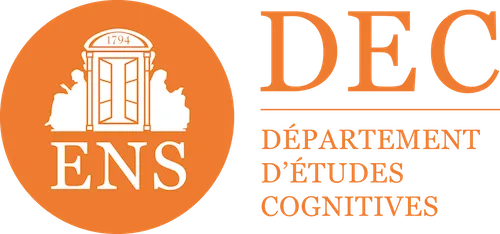

Digitalization of training: why and when to use asynchronous e-learning?
Virtual training courses are numerous and offer a wide variety of teaching methods... But it is sometimes difficult to find your way around. Would you like to design digital training adapted to the needs of your company, and those of your learners? Without really being aware of it, you already know the digital format that is calledasynchronous ! However, you have never perceived it as a choice to make, ahead of the tool or solution you need to have. Focus on asynchronous e-learning, a very powerful learning approach that is both flexible and stimulating, which is becoming a major asset for both the designer and the learner.
E-learning, digital learning, adaptive learning: everything you need to know to design asynchronous online training
The general trend is a melting pot: the term learning appears almost everywhere! It's not easy to find your way around purely marketing speeches, fashion trends, and a large number of amalgams that can be confusing. Because there are nuances in semantic terms but also objectives and challenges specific to each trainer and/or company, we suggest that you see more clearly with the help of a lexicon very concise.
Digital training: online learning lexicon
Nowadays, the world of vocational training and that of higher education adopt different levers, including new technologies, in order to boost the skills of individuals. Thus, face-to-face learning modules are supported, or even complemented by digital tools and digitized solutions. But what about the main definitions that shape the contours of digital training? Here are some essential concepts that will allow you to deploy, without a false note, your online courses.
O Digital Learning
Digital Learning combines learning methods and pedagogical practices that have a single objective: strengthen the skills of online learners (or create new ones) and by extension, allow them to be actors in their training via different types of media (tablet, computer, smartphone, etc.).
From academic guidance to professional choices, from university classes to company headquarters, Digital Learning makes it possible to create and distribute distance learning courses. It is similar to a planet, whose rings are nothing but a multitude of ingenious devices, such as virtual reality, or 3D simulations, and sometimes more simply, the sharing of documents or courses on the Web.
Resulting from digital transformations, digital learning also includes the terms elearning and Adaptive learning. One refers to a type of training while the other refers to a learning style. In all cases, it will be a question of consolidating the learner's learning experience.
O E-learning
As mentioned earlier, e-learning is an emanation of the Digital Learning planet. In collective imagery, e-learning, combined with MOOC, is something not considered “cheesy.” As a reminder, online learning methods have been considerably developed using modern and highly evolved tools. (E-learning deserves to be given its rightful place (sic.)!)
More specifically, it is a type of distance training that takes place online: We will talk about asynchronous training. Led by one or even several trainers, e-learning training is based on the use of digital media or software. Thanks to e-learning, training designers transmit their expertise to learners, who benefit from increased learning, according to their availability and regardless of their geographical location. With e-learning training, it is also possible to divide your training courses, and to personalize them according to your objectives or the profile of the learners.
O Adaptive Learning
Adaptive learning is a practice that is at the heart of e-learning. It is based on an elementary principle: the same training content is automatically adapted for each learner. This adaptation can be done according to criteria defined beforehand by the trainer (“this concept is important, it should be seen several times”) or according to the behavior of the learner (“he spends less time on the content, another subject should be recommended). At Didask, for example, we favor criteria linked to recommendations from research in cognitive science: the alternation of subjects or training themes, the spacing of sessions, the management of cognitive load are all markers for generating an adequate educational experience. Adaptive learning is not a miracle method: its impact depends on the effectiveness of the training content offered. Use exercises to put into a real work situation allows the trainer to assess the skills and abilities of his learners, who evolve within personalized and individualized learning paths.
Asynchronous Digital Learning: a format that can be used alone or in addition to the synchronous format
Synchronous training, both at a distance and in person, takes place in real time. Her alter ego? The asynchronous e-learning format! Regardless of the place or time, learners can access deferred learning content independently. In this perspective, asynchronous Digital Learning can go it alone, or complement synchronous learning practice. Let's look at two formats that, one in the other, have a lasting impact on the quality of your digital training.
What does synchronous training consist of?
Synchronous training assumes a real-time learning and the presence of a trainer. In other words, learners follow the training together and share the same physical (face-to-face) or online (remote) work environment: meeting room, virtual classroom or videoconference are very telling examples. Interactivity is largely promoted by tools made available to trainers and learners, such as instant messaging: discussions and questions allow everyone to exchange and stay in touch during the training, which takes place live.
What does asynchronous training consist of?
Created and then distributed online, asynchronous training is based on the concept of temporality and therefore, the availability of your learners. Not being forced to connect at the same time to follow a simultaneous training course, they can access the e-learning training modules at different times, from home or in a company and for periods of their choice: we will talk about self-study modules. We also note a considerable gain of time for trainers and HR managers who, in this context, do not have to worry about any technical or logistical organization.
Digital training: why use asynchronous e-learning?
Synchronous and asynchronous training courses are not opposed, quite the contrary. They complement each other, in order to guarantee effective and impacting learning. In view of new technical and didactic constraints, asynchronous e-learning is a very flexible learning modality, which reinforces the content of face-to-face training. Asynchronous e-learning accelerates the development of your learners' skills, allowing them to progress sustainably. But how? That's what we're going to see right now.
E-learning adapted to the needs of my learners
The contributions of e-learning enrich the didactic activity for both the designer and the learner. In the context of e-learning training, interactivity between the trainer and his learners is decisive. Individually or collectively, these interactions promote not only motivation, but also initiative and the ability to think differently. By deploying engaging tailor-made training courses, based on written, audio or video content, you meet the expectations of your learners, who become actors in their learning, with a view to personal and professional development. As a trainer, you must be sure to define your educational objectives prior to your training.

Asynchronous e-learning: an ideal pedagogical approach to create tailor-made training courses
Thanks to asynchronous e-learning, the trainer can transmit his expertise quickly, by deploying varied exercise modules, in order to manage his training in complete autonomy. Pedagogy and technology become one, to trigger interactive and engaging learning experiences that facilitate the remembering of information, always getting to the point.
Whatever your subject or field of expertise, e-learning is combined with synchronous Digital Learning or face-to-face learning: the Blended Learning, a mixed formation, combining The remote (distance learning or virtual classrooms) and Face-to-face (classical training), is the result. Blended learning is ideal before a training course to prepare a course, and downstream, in order to consolidate certain notions (between 2 training sessions for example).
Today, blended learning has largely been modernized and can take the form of a micro-challenge: this interactive and engaging challenge is offered to learners at the end of the module, as part of an online training course.
Good to know: with asynchronous e-learning, you significantly improve the learning experience, while ensuring qualitative pedagogical continuity. Today, faced with growing training needs, asynchronous e-learning is becoming an essential tool, highly profitable for training designers and organizers! The organizational and economic benefits of asynchronous e-learning also allow you to avoid certain sensitive points that may impact face-to-face training. When you receive a more or less dense audience of learners, animating interactions and pacing your training smoothly can be unmanageable.
You may be too dependent on trainers, of having to create groups, which will undoubtedly generate a late launch of your training or waiting periods for some of your learners. From a financial point of view, the implementation of face-to-face training is not consistent.
However, the remuneration of trainers and the organization of several sessions weigh heavily in the balance! Conversely, asynchronous e-learning training initially requires the investment of certain costs, especially concerning its implementation. But these costs are modulated gradually, according to the number of learners.
Asynchronous e-learning and adaptive learning: learning effectively
Increasing learning means equipping yourself with tools that will help you give meaning to what you do, whether you are a learner and/or a designer: an intimate meaning (what drives you), and a meaning that you will propose (as a designer), or that you are offered (as a learner). In other words, a goal to be achieved, a professional objective. Singularity and personal aspirations question the desirability of a training course, first and foremost its format of creation and distribution. Adaptive learning, adjusted to the needs of the learner, triggers real pleasure when it comes to learning and feeling one's progress. By choosing asynchronous e-learning, your learners benefit from personalized support, thus optimizing their professional development and employability.
Adaptive learning and asynchronous e-learning go hand in hand
Learn effectively yes, but only on condition that a few basic principles are respected: quality of the content provided by the trainer, presence and interaction of any kind, learning content, organizational methods, respect for budgetary constraints, but also relevant feedback. Your training must be a lever for emancipation, in order to help and accelerate the development of skills (technical and behavioral) of your learners. Moreover, according to studies from cognitive sciences, the personalization of learning, whose pedagogical effectiveness has been proven, represents a decisive step in the development of digital paths. Hence the idea of focusing on personalization levers that are really useful for learning, such as: leveling the level of difficulty according to the exercises proposed, alternating the topics covered suggesting spacing, and pause times to assimilate the information transmitted.
Personalized support: the future of e-learning training
It is therefore imperative to meet the unique needs of each person, according to existing levels and profiles, based on reliable and consistent data (data). The assimilation, consolidation and application of certain concepts (notions, skills or knowledge) depend largely on how we learn, on our ability to gather information. Difficulties encountered, preferences or facilities are all variables that will have to be configured, in order to offer an interactive and impacting immersion to your learners, in all your training courses..
Make an appointment directly with our eLearning experts for a demo or simply more information.














